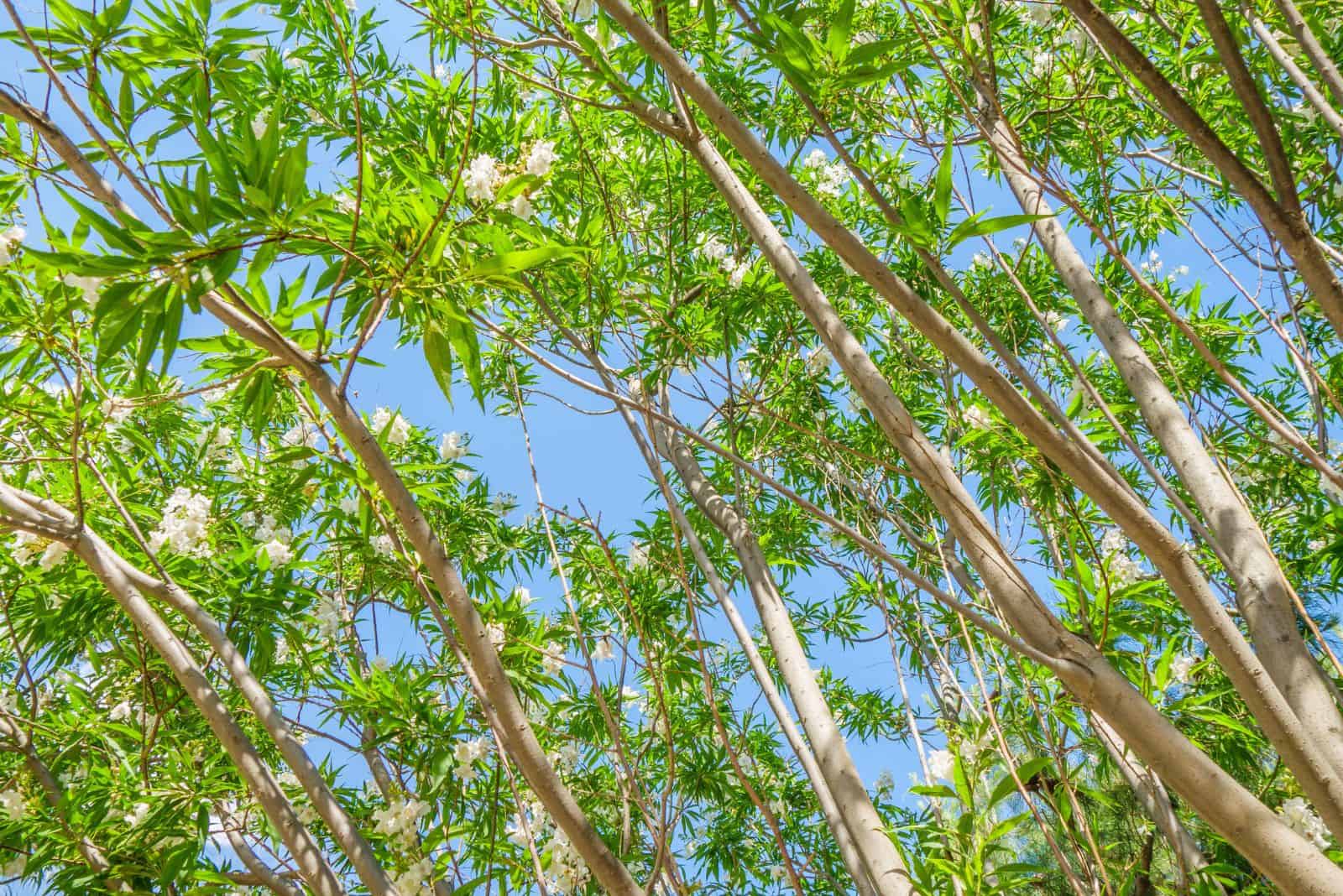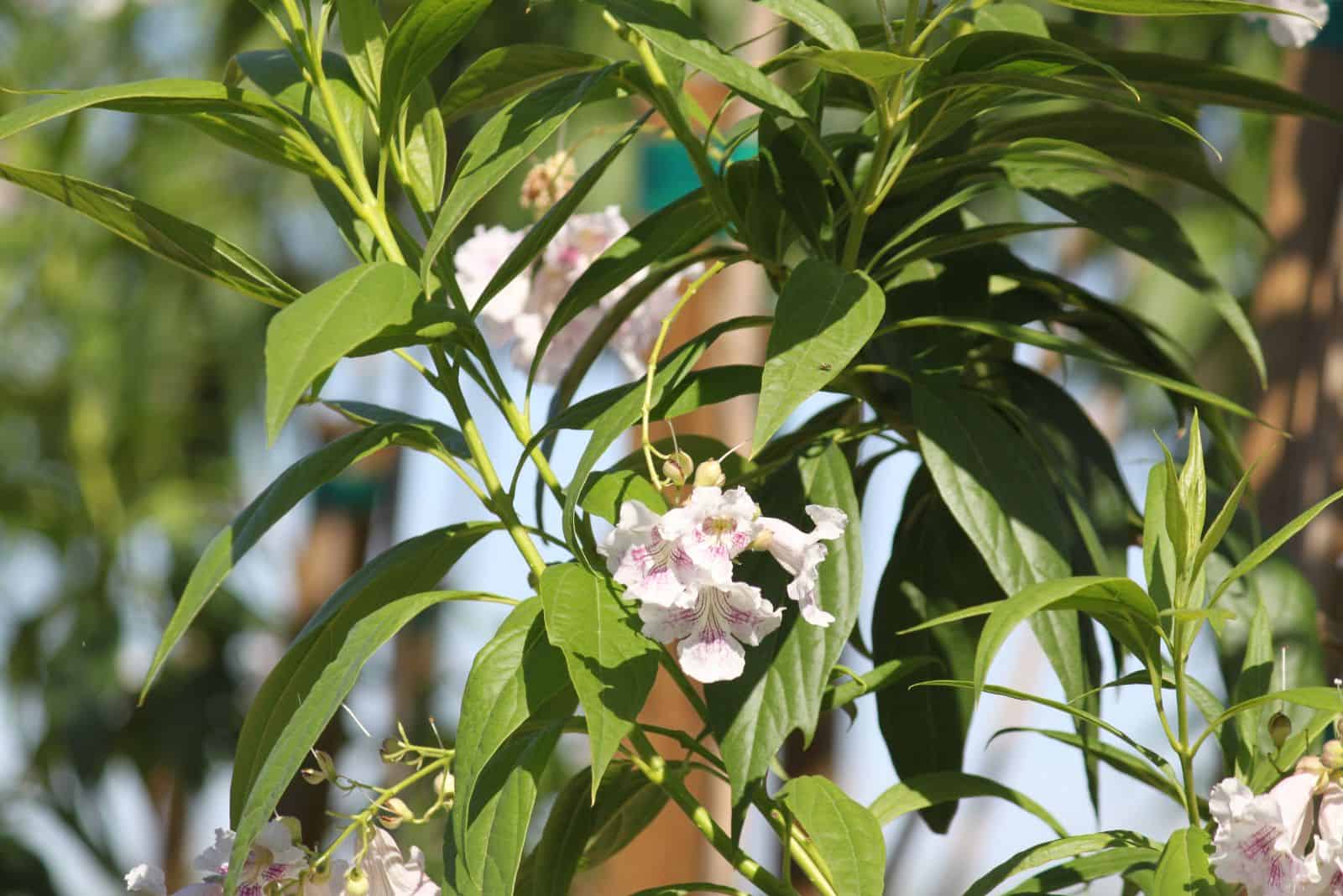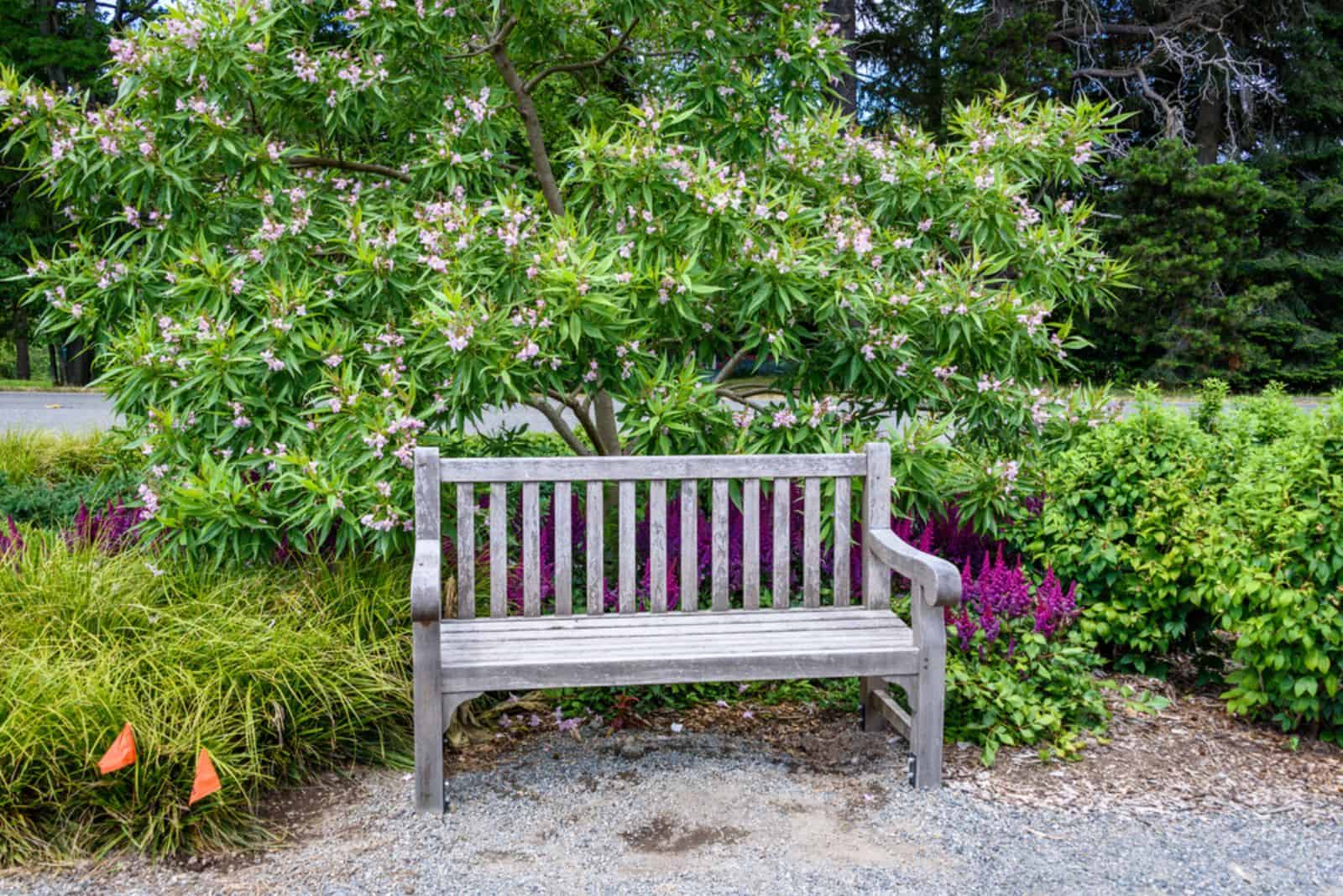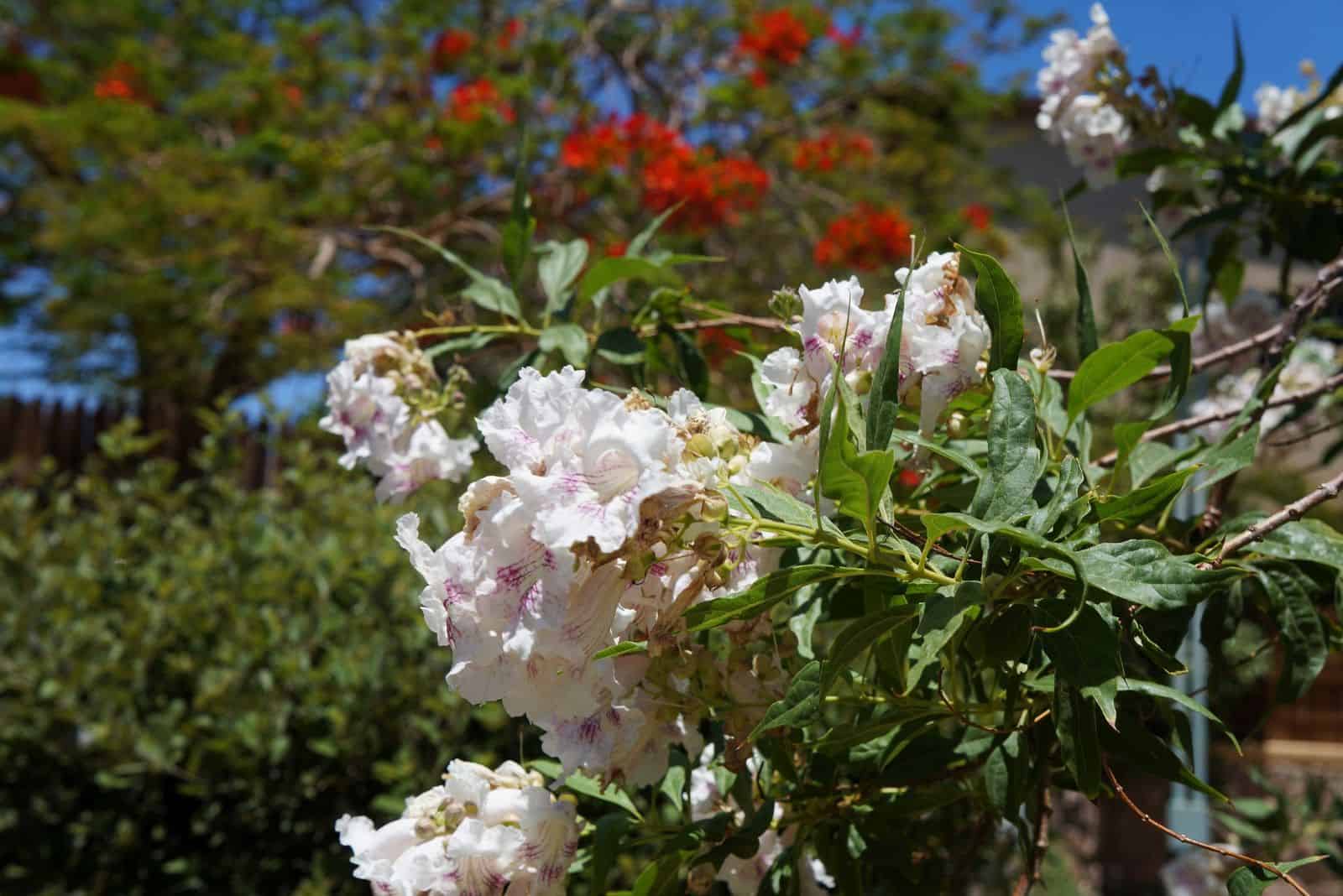The Chitalpa tree, otherwise known as Chitalpa Tashkentensis, has gorgeous, vivid pink blossoms. It is a low-maintenance tree that grows quickly and produces long, pointed green leaves that mix beautifully with their blossoms.
These trees are hybrids, which means they are made by crossing two beautiful American natives, the Desert Willow and Southern Catalpa.
These trees are truly unique, and they simply make any garden look majestic. If you want to learn more about this gorgeous hybrid, be sure to keep reading!
Chitalpa Tree: Common Features
The Chitalpa Tashkentensis is a deciduous tree that can grow about 30 feet tall, but it can also be grown as a flowering shrub. As we mentioned, this tree is actually a hybrid cross. It also belongs to the Bignoniaceae family.
To be more specific, it was made by crossing the Chilopsis Linearis and Catalpa Bignonioides — both trees are truly breathtaking!
The trees were created in Uzbekistan in 1964, but they were introduced to the US by a botanist called Robert Hebb in 1977.
Therefore, the Chitalpa tree has leaves that are somewhere in between the narrow leaves of the Desert Willow and the heart-shaped foliage of the Southern Catalpa tree. So, we can say that they have elliptical foliage with a deep green color.
These green leaves turn golden and bronze in the fall, which adds even more color to your garden.
However, what makes this tree unique are the beautiful flowers that can be a mesmerizing pink, white, and violet color, and make your garden look absolutely dreamy. These pink flowers start blooming in late spring or summer (depending on the climate in your region), and they keep on growing throughout the growing season.
This flowering tree is a great companion plant because the flowers attract all sorts of pollinators, including hummingbirds!
The most famous cultivar is the Chitalpa Tashkentensis ‘Pink Dawn’, which is a flowering tree that produces trumpet-shaped flowers. They also have pink blooms, hence the name ‘Pink Dawn’.
Another type is called ‘Morning Cloud,’ and they produce somewhat white and pale pink flowers.
Nonetheless, both are considered to be ornamental trees and are frequently used in landscaping and decorating, especially because they are also relatively easy to take care of.
Now, let’s talk about the care guide for this beautiful tree!
How To Grow The Chitalpa Tree
The Chitalpa is a fast-growing tree that thrives in U.S. department of agriculture plant hardiness zones (USDA) 6 to 9.
They thrive in full sun, though they can also tolerate growing in partial shade. They require slightly acidic and well-drained soil — the ideal type would be loamy or sandy soil.
You don’t have to worry about the watering needs too much as they are low water use trees that can tolerate some drought. However, if you want them to bloom I would recommend that you keep the soil moist.
They will also need some fertilizers — established trees can be fertilized every other year, and you should apply all-purpose fertilizers at the beginning of the growing season (spring is ideal for fertilization).
Don’t skip applying fertilizers as they can encourage new leaves and flower production.
When it comes to common issues, they are susceptible to some pests and fungi, and they mostly have trouble with their foliage. The most common issues are aphids, verticillium wilt, and root rot. Aphids will suck away the plant’s delicious juices, which leads to discolored leaves.
You can either use pesticides or a garden hose to get rid of these annoyances.
Root rot is primarily caused by overwatering, so you should definitely check the soil type and ensure that the tree gets proper drainage. Different fungi can cause verticillium wilt, though this can be treated with fungicides or neem oil — also, trim off any affected leaves to prevent the spread of infection.
Because the arid Southwest has a changing climate, the wet spring conditions where foliar powdery mildew typically thrives are becoming less common in central Arizona. Therefore, powdery mildew is not an issue anymore.
Frequently Asked Questions
1. What is a Chitalpa tree?
The Chitalpa tree is a flowering tree that is made by crossing the Desert Willow and Southern Catalpa. This hybrid produces beautiful pink flowers, and it is also relatively easy to take care of. It is also a fast-growing tree, so if you want to have an established tree in your garden quickly, consider growing a Chitalpa tree.
2. What is the lifespan of a Chitalpa tree?
Chitalpa tree varieties can survive up to 150 years, which is great considering that it is a hybrid.
3. How fast does the Chitalpa tree grow?
Chitalpa trees can grow around 3 feet per growing season, and they can reach up to 35 feet tall in perfect growing conditions. However, it usually reaches up to 25 feet tall.
To Sum Up
If you are looking to decorate your garden and add more color to it, then consider growing a Chitalpa tree. This gorgeous hybrid produces dreamy white, pink, or purple flowers (depending on the variety).
You won’t even have to spend much time and energy on it because it is relatively easy to grow, especially when the tree is established. All you have to do is provide it with good well-draining soil, add some fertilizers and water every now and then, and you are good to go!
I hope this article was helpful.
Until next time!
Like this post? Share or pin it for later!





